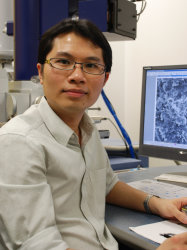BibTex format
@article{Wong:2022:10.1617/s11527-022-01961-5,
author = {Wong, HS and Angst, UM and Geiker, MR and Isgor, OB and Elsener, B and Michel, A and Alonso, MC and Correia, MJ and Pacheco, J and Gulikers, J and Zhao, Y and Criado, M and Raupach, M and Sørensen, H and François, R and Mundra, S and Rasol, M and Polder, R},
doi = {10.1617/s11527-022-01961-5},
journal = {Materials and Structures},
title = {Methods for characterising the steel–concrete interface to enhance understanding of reinforcement corrosion: a critical review by RILEM TC 262-SCI},
url = {http://dx.doi.org/10.1617/s11527-022-01961-5},
volume = {55},
year = {2022}
}

